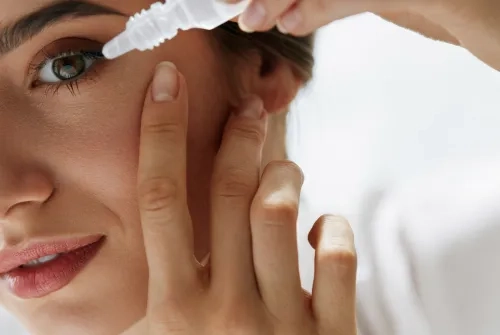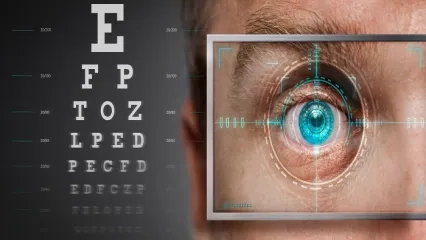Alo Yeditepe
Alo Yeditepe
Medication Administration to the Eye
Contents
Diagnosis and treatment of eye diseases/injuries include pre-intervention local anesthesia, administration of antibiotics and anti-inflammatory medications, and artificial moistening of the eye.
Basic Principles
- Eye drops are mostly used to moisten the eye and to treat problems such as glaucoma and infection.
- Eye ointment is used for local application of medications that are desired to have a long-term effect.
- Some eye medications cause temporary burning, itching, and redness. Systemic effects are rare.
Points to Be Considered
- After the medications are started to be used, open medication bottles should be used within the time specified in the prospectus to prevent contamination.
- If the medication is available in a single-dose package, it is primarily preferred for use.
- The tip of the dropper for dripping medication and the tip of the medication tube for applying ointment should never come into contact with the eye.
- The medication used for one patient should not be used for another patient.
- If the medication is to be applied to both eyes, the medication should be applied to the healthy eye first and then to the sick eye.
- If both drops and ointment are to be applied to the patient, the drops should be applied first and then the ointment.
- Unless otherwise stated, contact lenses should not be used during the treatment.
- While applying to children, their heads and hands should be held by a helper, and they should be prevented from touching the drop.
Medication Administration Routes
The effect of the medication given to the patient in the region where it is applied is called the local effect. Local application is used for the effect of the medication on a certain area. Some of these ways (intranasal, rectal, buccal) also allow systemic effects depending on the reason for use and the medication used.
Eye Drop Application Method
- First, wash your hands with soapy water and dry them.
- Provide hand hygiene by using hand disinfectant when you do not have the opportunity to wash your hands.
- Tilt your head back.
- Gently pull the lower eyelid with your index finger.
- The tip of the eye dropper, which has been opened for instillation into the eye, should not be touched anywhere, including the eye. Thus, you will be protected from the risk of infection.
- Drop your medication into this socket without touching the tip of the dropper and close your eyes slowly.
- Be sure to keep your eyes closed for at least 1-2 minutes.
- During this time, press the inner corner of your eye close to your nose with your middle finger.
- Do not forget to wash your hands again after all these procedures.
- After using your medication, the mouth of the bottle should be tightly closed.
- Use your medication only for the recommended time.
- If you need to use 2 different eye drops at the same time, apply them at least 15 minutes apart.
- Eye drops may cause a burning sensation in the eye, but if it lasts longer than a few minutes, consult a doctor/pharmacist.
- When applying eye drops to children, take care to lay their heads flat.
- Children usually close their eyes tightly. In this case, when the child opens his/her eyes, it should drip to the point where the eyelids join together next to the nose so that the medication enters the eye.
Eye Ointment Application Method
- First, wash your hands with soapy water and dry them.
- Provide hand hygiene by using hand disinfectant when you do not have the opportunity to wash your hands.
- Do it in front of a mirror to see the procedure you are doing.
- Look up, tilting your head back.
- Gently pull the lower eyelid down.
- Do not put the tube in contact with your eyes.
- Apply approximately 1 cm of ointment to the inside of the lower eyelid.
- Close your eyes and blink a few times.
- Wipe excess ointment from your eyes and eyelashes with a clean cloth.
- You may see blurry for a while, never rub your eyes.
- Close the cap of the tube after use.
- Do not use it for more than 4 weeks to avoid contamination of the eye ointment.
- If you are using eye drops together, first use the eye drops and take a break for 5 minutes.
- If you need to use two eye ointments, take a break of at least 10 minutes.
This content was prepared by Yeditepe University Hospitals Medical Editorial Board.
”
See Also
- Damages of Fake Sunglasses
- What is Cataract? Symptoms and Treatment
- Do not Risk Going Blind While Trying to Have Colored Eyes
- Get Your Child's Eye Examination Done Before They Go to School!
- Watch Out Blue Light Emitted By Devices For The Health of Your Eyes
- Pollen is Now Seen Outside of Seasonal Changes
- A Common But Little-Known Disease: Retinopathy of Prematurity (ROP)
- Pay Attention to the Flashing Light in the Eye!
- Thyroid-Related Eye Diseases
- Glaucoma
- If You Have Diabetes, Consult An Ophthalmologist At Least Once A Year.
- It was Told that She could Lose Both Eyes, but She Recovered with an Operation
- Untreated Strabismus Can Cause Vision Problems!
- The Danger to the World: MYOPIA
- Eyelid Diseases
- Is Strabismus Genetic?
- One in 20 Newborns Have Tear Duct Obstruction
- Are Flies Flying Before Your Eyes?
- 7 Tips to Protect Your Eye Health
- Allergic Conjunctivitis (Eye Allergy)
- Eye Problems Increase as Children's Digital Screen Time Extends
Alo Yeditepe








